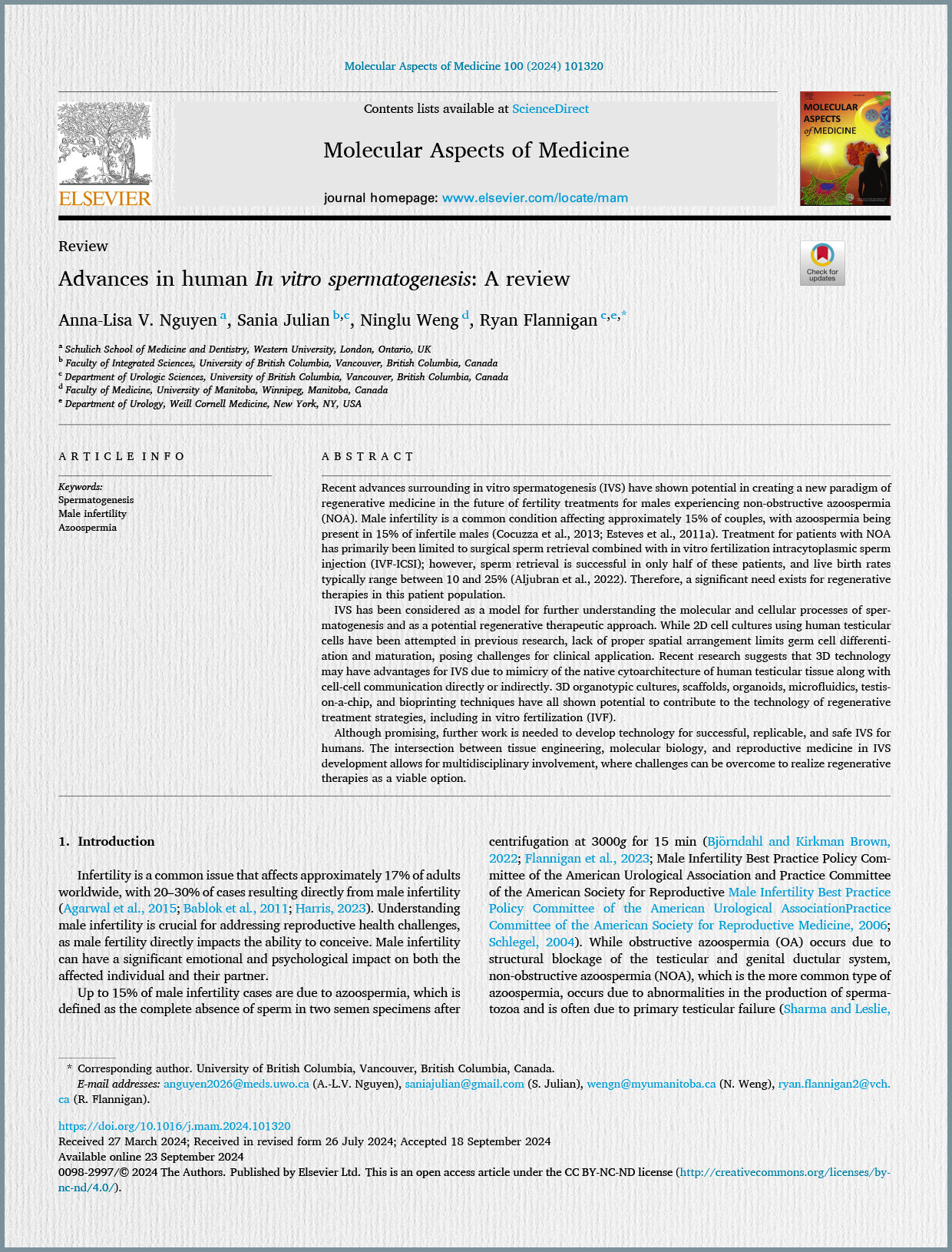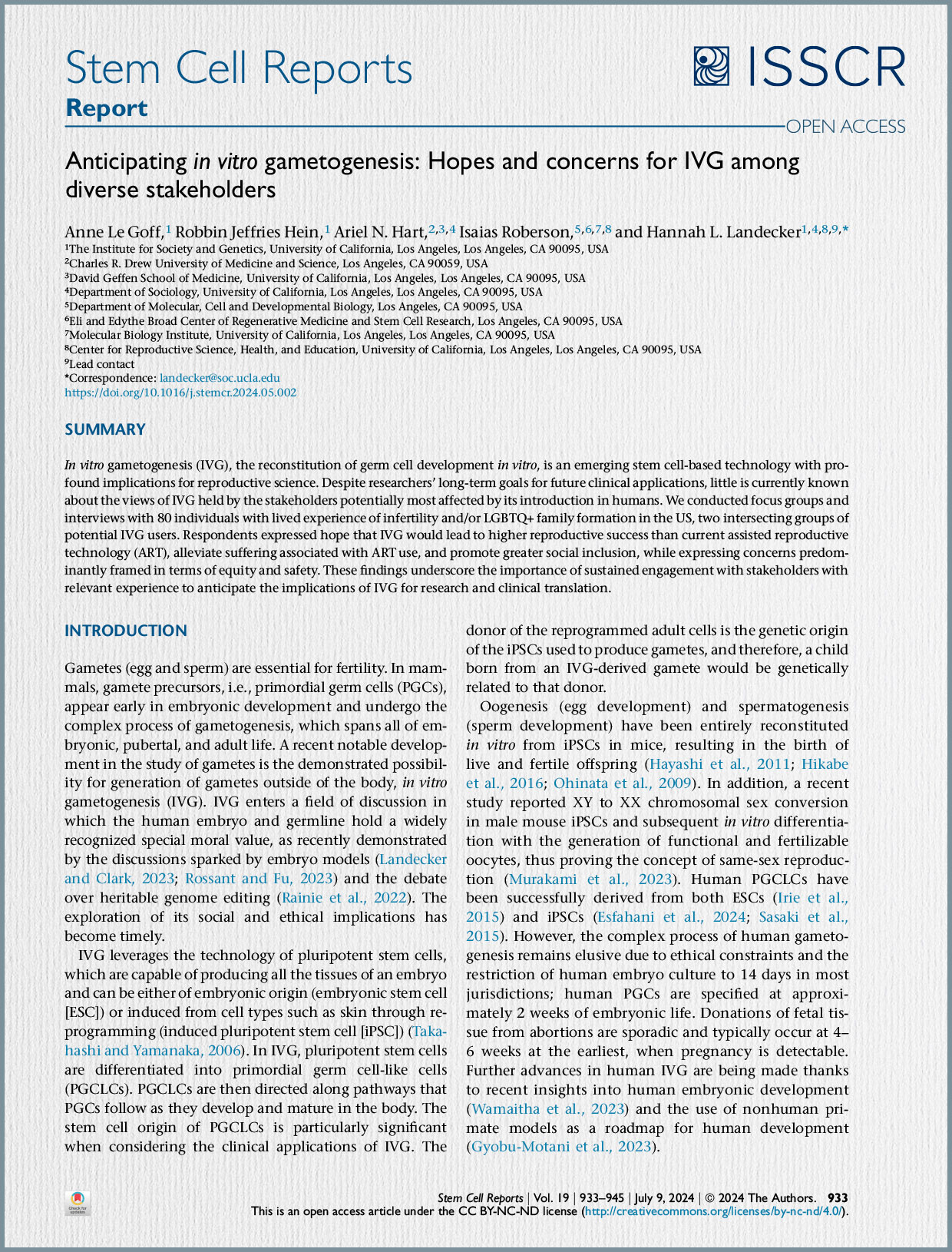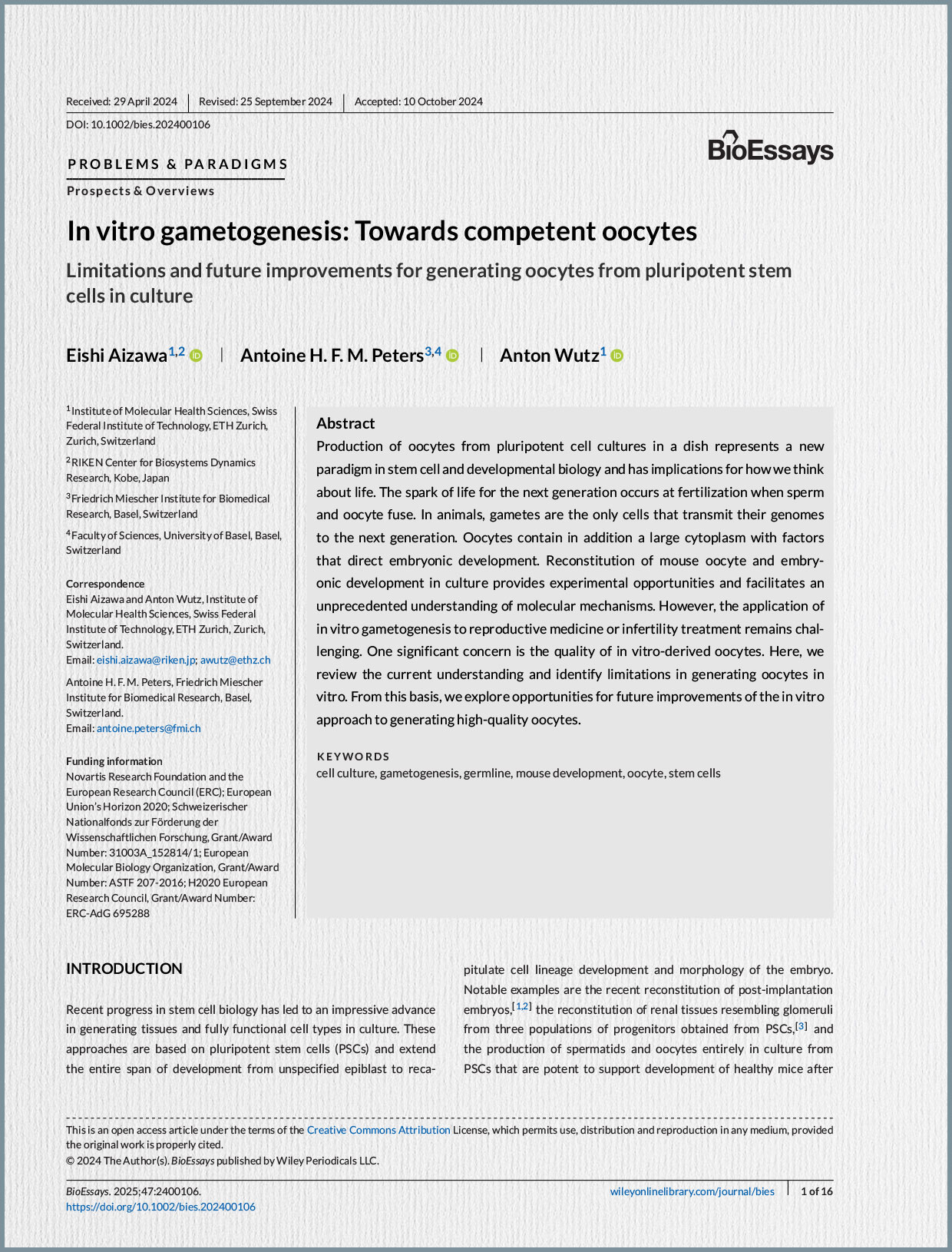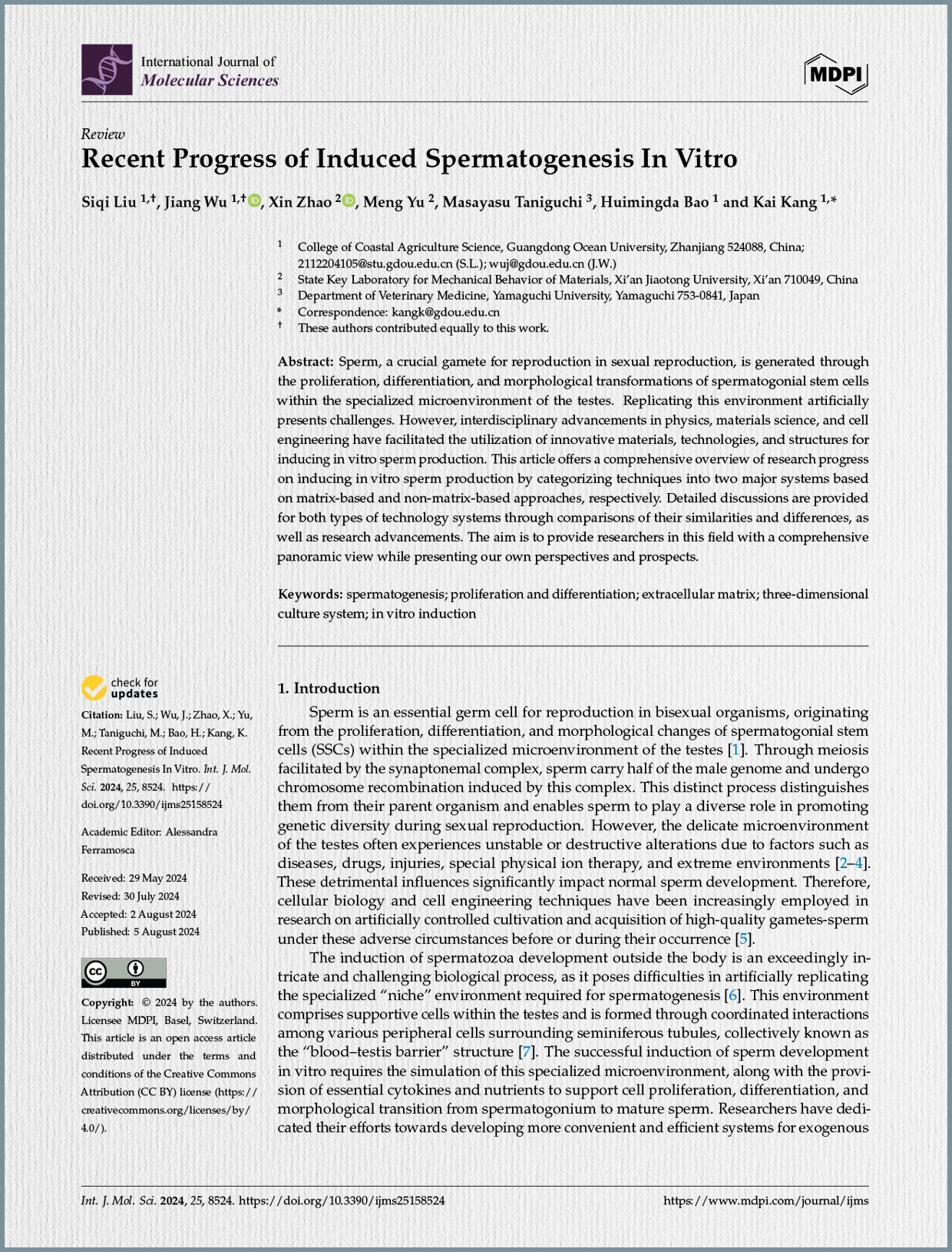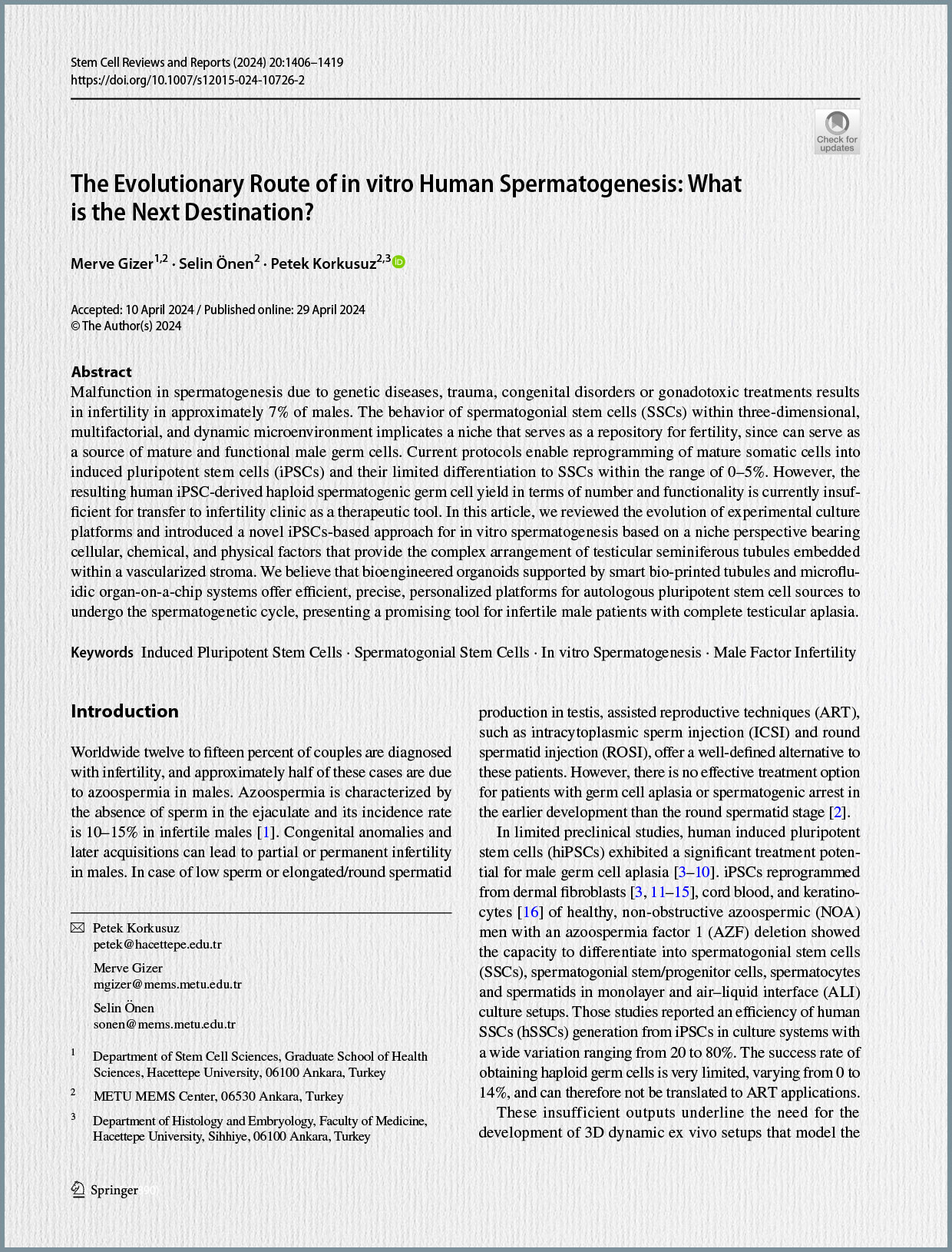The authors highlight that sperm is a crucial male gamete essential for sexual reproduction, and it is naturally generated through the intricate processes of proliferation, differentiation, and morphological transformations of spermatogonial stem cells (SSCs) within the specialized microenvironment of the testes. Replicating this complex biological environment artificially presents a significant challenge. However, they note that advancements in various interdisciplinary fields, including physics, materials science, and cell engineering, have facilitated the utilization of innovative materials, technologies, and structures to achieve in vitro sperm production.
The article categorizes the techniques developed for inducing in vitro sperm production into two major systems: matrix-based approaches and non-matrix-based approaches. The review aims to offer researchers in this field a comprehensive view by providing detailed discussions on these systems, including aspects like matrix formulation, culture medium composition, methods for detecting markers or cell characteristics, and whether the techniques have successfully generated sperm cells or resulted in offspring. By comparing the similarities and differences among these technical systems and outlining their research progress, the authors intend to provide a broad panorama and share their own perspectives and prospects for the future.
Matrix-Based Approaches
Within the matrix-based category, the article discusses Biomaterial-Based Scaffold Induced Spermatogenesis. The most commonly utilized testicular scaffold in this approach is the decellularized testicular matrix (DTM). DTM is prepared by treating testicular tissue with a substance like SDS to remove the cellular components while preserving the essential three-dimensional structure and the major constituents of the natural tissue scaffold. These conserved components include type I and IV collagen, fibronectin, laminin, and glycosaminoglycans. Furthermore, proteomic analysis of DTM has revealed the presence of numerous other extracellular matrix proteins, indicating its intricate composition.
Studies using DTM have shown promising results. Culturing mouse SSCs on DTM hydrogel scaffolds containing the stimulant D-serine demonstrated that these scaffolds are suitable for SSC culture and actively promote their proliferation, as indicated by an upregulation in Plzf expression levels. Further research indicated that DTM hydrogels, also containing D-serine, could enhance both the proliferation and differentiation of SSCs, leading to a significant increase in the expression of the pre-meiotic gene Plzf, the meiotic gene Sycp3, and the post-meiotic gene Tnp1.
The application of DTM extends to human cells as well. Human spermatogonial cells cultured on decellularized testicular matrix derived from sheep testes exhibited significantly enhanced expression of pre-meiotic genes such as OCT4 and PLZF, meiotic genes like SCP3 and Boule, and post-meiotic genes including Crem and Protamine2 after 6 weeks of culture, when compared to two-dimensional (2D) culture systems. The expression levels of differentiation genes were observed to increase with longer culture periods. In another experiment, sheep DTM was used as ink for 3D printing hydrogel scaffolds to cultivate mouse testicular cells. This approach resulted in improved cell viability and engraftment capacity, along with increased expression of pre-meiotic markers such as Plzf, Gfrα1, and Id4. Importantly, spermatogonial cells were observed to differentiate into sperm-like cells on the DTM scaffold in this study. Human spermatogonial cells isolated and cultured on sheep DTM also showed significantly increased expressions of pre-meiosis genes OCT4, Plzf, SCP3, BOULE, and post-meiosis genes CREM and Protamine2 compared to the 2D group.
Despite these successes, the article points out a significant challenge associated with DTM: inherent variability. Due to differences in the production process and variations in age and condition among tissue donors, each batch of DTM can exhibit variations, potentially leading to inconsistencies in experimental outcomes across different groups.
Non-Matrix-Based Approaches
The review also discusses Non-Biomaterial-Based Scaffold Induced Spermatogenesis, where the culture scaffolds are derived from materials other than biological matrices like DTM. A commonly utilized organic scaffold in this category is derived from agarose. A study culturing pig SSCs in a 0.2% agarose 3D hydrogel demonstrated significant increases in the transcript levels of NANOG, EPCAM, UCHL1, GFRA1, and Plzf. Additionally, notable elevations were observed in the protein levels of Plzf, OCT4, SOX2, and TRA-1-81. The transcription of OCT4 and THY1 was upregulated, while the translation of NANOG and TRA-1-60 was also upregulated. Conversely, the transcription level of the germ cell differentiation marker C-KIT exhibited significant downregulation. These findings suggest that a three-dimensional (3D) culture microenvironment using agarose can more effectively sustain the self-renewal of pig SSCs compared to a 2D culture microenvironment.
Further research has shown that scaffolds for cultivating SSCs can be composed of various materials. Examples include:
- An agarose and laminin-coated protein scaffold was successfully used to cultivate human spermatogonial cells, resulting in the presence of cells positive for Plzf, SCP3, PRM2, and Acrosin, as well as the formation of sperm-like and elongated sperm cells.
- A scaffold created using SACS along with laminin-coated protein and supporting cells was used to cultivate human SSCs, which showed expression of Plzf, α6-Integrin, Bcl2, and c-KIT genes.
- Co-cultivating mouse spermatogonial cells with alginate hydrogel and supporting cells led to significantly increased levels of integrin alpha-6, integrin beta-1, Nanog, Plzf, Thy-1, Oct4a, and Bcl2 expression. This type of scaffold was effective in promoting proliferation and maintaining the self-renewal capacity of SSCs, while also improving the efficiency of SSC transplantation.
- Purified pig SSCs were cultivated on poly-L-lysine (PLL) coated dishes along with laminin coating for 28 days without compromising their undifferentiated germ cell phenotype.
- Mouse spermatogonial cells cultured on laminin-coated protein (LCP) and poly-L-lysine (PLL) demonstrated expression of VASA, GPR125, Uchl1, GFR-A1, and DAZL genes, indicating that LCP and PLL-based in vitro culture systems are efficient for the long-term maintenance of stable SSCs with self-renewal ability.
- A gelatin-based hydrogel known as Dynamic gelatin-based hydrogels was utilized to mimic the inherent structural dynamics of the extracellular matrix for the cultivation of primordial germ cells. Following cultivation, notable expression of pluripotency markers like NANOG and OCT3/4 was observed, along with the presence of nestin-positive, alpha-fetoprotein-positive, and alpha-SMA-positive cells, representing differentiated cells from all three germ layers. These findings suggested that mouse embryonic stem cells (mESCs) obtained after 2 months of 3D cultivation in this hydrogel possessed functional pluripotency, and the hydrogel served as an effective 3D platform supporting their long-term proliferation and self-renewal.
- Cryopreserved mouse testicular tissue cultured in an agarose hydrogel containing VEGF nanoparticles demonstrated maintenance of seminiferous tubule integrity and the presence of Plzf- and KI67-positive cells, suggesting that this gel formulation can enhance the primordial germ cell recovery rate.
Under the umbrella of in vitro induced spermatogenesis, the article also details the use of organ culture methods. This method involves placing small pieces of testicular tissue onto a gel block (such as agar) and culturing it in a medium that partially submerges the block. When employed with mouse spermatogonial cells, the organ culture method resulted in the observation of GFP-positive cells and the formation of round spermatozoa. Using this method, rat testicular tissue was successfully cultured for 52 days, showing the expression of Acrosin and Crem positive proteins and testosterone production after 3 days. The addition of adipose tissue from the epididymis even led to spontaneous contraction of the cultured seminiferous tubules after 21 days. Matsumura et al. demonstrated that organ culture techniques could effectively induce in vitro spermatogenesis from mouse germ cells, leading to the development of mature spermatozoa that could be sustained for over 70 days within the cultured tissue. Notably, Sato et al. successfully cultivated mouse germ cells using organ culture methods and obtained viable mouse sperm capable of generating healthy offspring through intracytoplasmic sperm injection (ICSI).
Conclusions and Prospects
In their conclusions, the authors emphasize that an imperative future direction for in vitro-induced spermatogenesis systems is the development of culture systems that are devoid of animal-derived components and substrates and possess a clear chemical composition. They argue that the use of animal-derived components, particularly inconsistent and ambiguous ones like sera, introduces numerous uncertainties that hinder the establishment of stable in vitro-induced spermatogenesis systems. This lack of consistency across different research groups, which have proposed various in vitro systems, makes it challenging to establish a unified and stable technical approach and translate it for clinical application, thereby impeding progress in the field. Therefore, the authors strongly advocate for researchers to collaborate across interdisciplinary domains, such as biophysics, biochemistry, and molecular biology, to develop more reliable and efficient culture systems that are free from animal sources or matrices.



